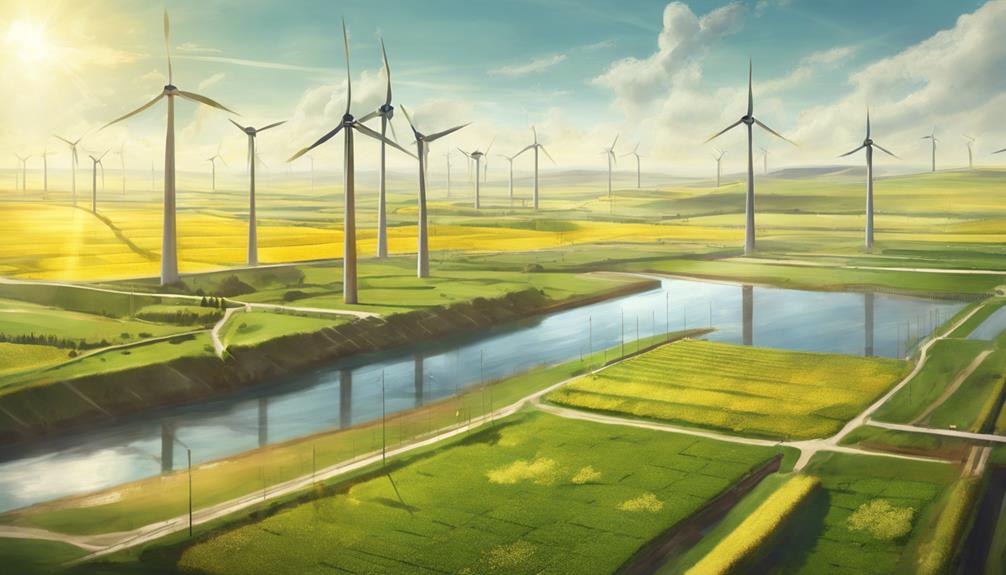In the quest for sustainable energy solutions, the exploration of alternative energy sources stands at the forefront of scientific inquiry. Amidst the evolving landscape of renewable resources, certain contenders emerge as frontrunners, showing promise in meeting the growing global energy demand while minimizing environmental impact. As we navigate the intricate web of energy transition, one question looms large: which alternative energy sources hold the most potential for shaping our future energy paradigm?
Key Takeaways
- Solar energy is the fastest-growing renewable source with decreasing costs.
- Nuclear energy contributes significantly to global electricity with advanced safety features.
- Innovative sources like space-based solar power and tidal power show promise.
- Renewable energy advancements aim for significant capacity growth and efficiency improvements.
Wave Energy

Wave energy, also known as ocean wave power, is a promising renewable energy source that utilizes the kinetic energy of ocean waves to generate electricity efficiently and sustainably. This form of renewable energy holds significant potential in diversifying the global energy mix and reducing dependence on fossil fuels. By harnessing the power of waves, wave energy offers a clean and emission-free alternative to traditional energy sources.
Despite its advantages, wave energy technology is still in the early stages of development. Challenges such as cost-effectiveness and scalability hinder its widespread implementation. The location-specific nature of wave energy installations further restricts its adoption on a larger scale. However, ongoing research and innovation in this field aim to overcome these obstacles and enhance the efficiency of wave energy systems.
Solar Energy
With the rising global demand for sustainable energy solutions, solar energy has emerged as a frontrunner in the renewable energy sector due to its rapid growth and decreasing costs. Here are some key facts about solar energy:
- Solar energy is the fastest-growing renewable energy source, with costs decreasing by 13% in 2018.
- Solar power is projected to make up 60% of the predicted renewable growth, showcasing its significant contribution to the future energy mix.
- The U.S. has ambitious plans to double its solar installations to four million by 2023, highlighting the country's commitment to expanding solar energy capacity.
- Residential solar power capacity is expected to experience substantial growth, expanding from 58 GW in 2018 to 142 GW by 2024, indicating the increasing adoption of solar energy at the household level.
These facts underscore the immense potential of solar energy in meeting energy needs sustainably and its crucial role among renewable sources.
Geothermal Energy

Geothermal energy, harnessed from beneath the earth's surface for electricity generation, stands as a dependable and sustainable renewable energy source with significant global growth projections. Capturing heat from the earth's crust, geothermal energy provides a consistent and reliable source of electricity production. Projections indicate a substantial 28% capacity increase to 18 GW by 2024 on a global scale, showcasing the expanding role of geothermal solutions in the energy sector. Leading countries like Indonesia, the Philippines, and Kenya are spearheading the growth of geothermal capacity in Asia, highlighting its importance in diverse regions. In the United States, geothermal energy holds the potential to contribute significantly to the energy mix, with estimates suggesting it could generate 8.5% of the country's electricity by 2050. This form of energy offers various advantages, including low emissions and a small land footprint, making it an attractive option for sustainable power generation.
Biomass Energy
Biomass energy presents an opportunity for efficient conversion processes, which can contribute to sustainable energy production. By utilizing organic waste materials as sources, biomass energy offers a renewable alternative that aligns with efforts to reduce environmental impacts. Understanding the efficiency of biomass conversion and the sustainable sources available are crucial aspects in exploring its potential as a promising alternative energy source.
Efficient Biomass Conversion
Efficient conversion of biomass to energy is essential in maximizing the potential benefits of utilizing organic materials for power generation and reducing environmental impacts.
- Advanced Technologies: Implementing cutting-edge methods like gasification and pyrolysis can enhance the efficiency of biomass energy conversion.
- Combined Heat and Power: Utilizing biomass for combined heat and power systems can significantly increase overall energy efficiency.
- Co-firing: Co-firing biomass with traditional fuels in power plants can reduce emissions and increase the proportion of renewable energy in the mix.
- Energy Storage Solutions: Developing efficient energy storage solutions can address the intermittent nature of biomass energy production, ensuring a stable power supply.
Efficient biomass conversion plays a crucial role in harnessing the potential of biomass as a renewable, carbon-neutral energy source.
Sustainable Biomass Sources
Utilizing sustainable biomass sources for energy production presents a promising avenue towards reducing reliance on fossil fuels and mitigating carbon emissions in the energy sector. Biomass energy, derived from organic waste of plants or animals, serves as a renewable energy source that not only reduces waste in landfills but also contributes to a more sustainable energy mix. Despite emissions produced during biomass burning, it offers a viable method for power generation. However, challenges such as land and water requirements for plant growth may affect its feasibility in certain regions. Advancements in technology aim to enhance the efficiency and minimize the environmental impact of biomass energy production. Embracing biomass energy can play a significant role in transitioning towards a greener energy landscape while addressing the urgent need for renewable alternatives.
Wind Energy
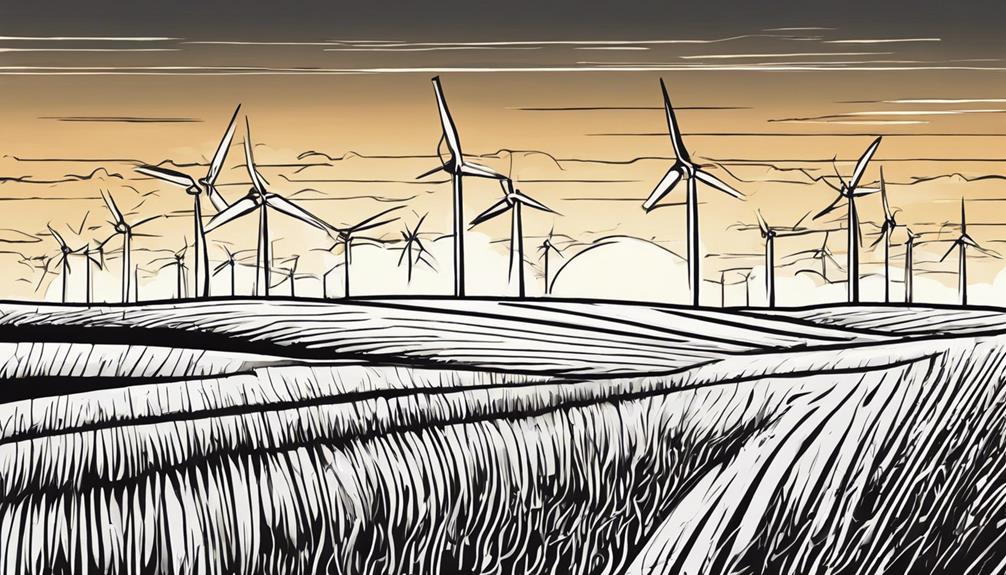
Wind energy, a vital component of the renewable energy sector, utilizes turbines to convert wind power into electricity. This sustainable energy source harnesses the natural power of the wind to generate electricity, offering a clean alternative to traditional fossil fuels. With the potential to significantly contribute to the global energy mix, wind energy showcases the capacity to help meet the growing demand for sustainable power sources.
Turbines for Power
Harnessing the power of natural elements, turbines for power play a crucial role in the generation of electricity, with wind energy turbines being a prominent example.
Key Points:
- Wind energy turbines utilize wind power to generate electricity.
- Onshore wind capacity is forecasted to reach 850 GW by 2024, showing a 57% increase.
- Offshore wind capacity is set to nearly triple to 65 GW by 2024.
- Denmark stands out as a leader in offshore wind energy installations, benefitting from consistent energy production and significant power output.
Wind energy turbines, both onshore and offshore, represent a sustainable and promising source of renewable energy, contributing significantly to the global shift towards cleaner power sources.
Renewable Energy Source
Renewable energy from wind sources plays a pivotal role in the global transition towards cleaner and sustainable power generation methods. In 2019, wind energy contributed 4.8% to global electricity generation. The capacity of onshore wind power is projected to rise to 850 GW by 2024, marking a substantial 57% increase. Moreover, offshore wind capacity is set to almost triple, reaching 65 GW by the same year. Notably, China is at the forefront of offshore wind deployment, with 12.5 GW in development, while the EU leads in global offshore wind capacity expansion, accounting for half of the total. These advancements highlight the growing significance of wind energy, particularly offshore wind, in the renewable energy landscape.
Harnessing Wind's Potential
The utilization of wind turbines for electricity generation has become increasingly prevalent in global efforts to transition towards cleaner and more sustainable energy sources.
Key Points:
- Wind energy is a renewable and clean energy source that uses wind turbines to generate electricity.
- Onshore wind capacity is projected to increase by 57% to 850 GW by 2024, showcasing significant growth potential.
- Offshore wind capacity is expected to almost triple to 65 GW by 2024, with Denmark leading in offshore wind energy installations.
- China leads in offshore wind deployment with 12.5 GW in development, indicating a strong commitment to wind energy.
These developments highlight a growing focus on harnessing wind's potential for energy production, with offshore wind playing a crucial role in global energy strategies.
Hydroelectric Energy
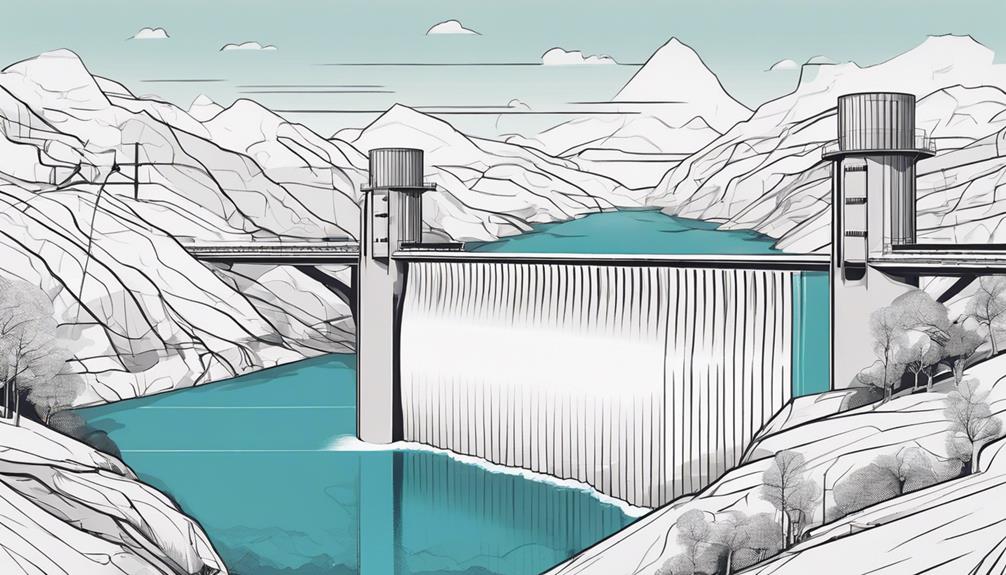
Utilizing the natural force of flowing water, hydroelectric energy stands as a prominent renewable energy source globally, contributing significantly to the electricity generation landscape. Hydroelectric power relies on the construction of dams to control the flow of water, which drives turbines to generate electricity. This method provides a reliable and consistent energy supply, making it the largest renewable energy source worldwide, responsible for about 16% of total electricity generation. Countries like China, Brazil, and Canada lead in hydroelectric power production due to their abundant water resources. Despite its benefits, environmental impacts must be considered in hydroelectric energy development. The creation of dams can lead to the displacement of communities and the disruption of aquatic ecosystems. However, as a mature technology, hydropower offers long facility lifespans and minimal operational costs once the infrastructure is in place. Balancing the advantages of hydroelectric energy with its environmental consequences is crucial for sustainable energy practices in the future.
Nuclear Energy
Nuclear energy is a crucial component of the global electricity mix, boasting a substantial contribution to power generation. The safety advancements in advanced nuclear reactor designs, coupled with their enhanced efficiency, are key factors in shaping the future of nuclear energy. However, the challenge of effective waste disposal remains a significant consideration in the utilization of nuclear power.
Safety of Nuclear Power
Safety considerations play a pivotal role in the operation and regulation of nuclear power plants.
Key Points:
- Nuclear power plants are equipped with multiple safety systems to prevent accidents and maintain reactor safety.
- Modern designs include passive safety features that can autonomously shut down reactors during emergencies.
- Statistical data indicates that the likelihood of severe nuclear accidents is minimal, positioning nuclear power as one of the safest energy sources available.
- Strict regulations and oversight by nuclear regulatory bodies uphold high safety standards within the nuclear energy industry.
Efficiency in Energy
Efficiency plays a crucial role in the evaluation and implementation of nuclear energy as a sustainable power source. Nuclear energy boasts a high energy density, with one kilogram of uranium-235 releasing the energy equivalent of about 2.7 million kilograms of coal. Nuclear power plants operate at high capacity factors around 90%, ensuring consistent and reliable electricity generation. Additionally, nuclear energy's minimal greenhouse gas emissions make it a cleaner alternative to fossil fuels. The nuclear industry maintains a strong safety record thanks to rigorous regulations and advanced safety systems. Advanced nuclear reactor designs like small modular reactors (SMRs) and molten salt reactors show promise for increased safety, efficiency, and waste management in the future.
| Aspect | Details |
|---|---|
| Energy Density | One kilogram of uranium-235 releases energy equivalent to about 2.7 million kilograms of coal. |
| Capacity Factors | Nuclear power plants operate at high capacity factors, typically around 90%. |
| Emissions | Nuclear energy produces minimal greenhouse gas emissions, positioning it as a cleaner alternative to fossil fuels. |
| Safety Record | The nuclear industry has a strong safety record, with stringent regulations and advanced safety systems in place. |
| Future Designs | Advanced nuclear reactor designs like small modular reactors (SMRs) and molten salt reactors offer improved safety and efficiency. |
Waste Disposal Challenges
Given the necessity for secure, long-term storage solutions for radioactive waste, nuclear energy encounters significant challenges in waste disposal.
Key Challenges in Nuclear Waste Disposal:
- Secure Containment: Radioactive waste produced by nuclear power plants necessitates safe containment for thousands of years.
- Deep Geological Repositories: Consideration is being given to utilizing deep geological repositories as a disposal option for nuclear waste.
- Yucca Mountain: Initially proposed as a storage site for nuclear waste in the U.S., Yucca Mountain faced political and technical obstacles.
- Global Consensus: Achieving agreement on nuclear waste disposal methods remains a complex and ongoing issue worldwide.
Energy Plant Efficiency Optimization
Enhancing the performance of energy plants through optimization techniques is essential for maximizing energy output efficiency and minimizing environmental impact. Energy plant efficiency optimization involves the implementation of technologies such as cogeneration and combined heat and power systems, which improve overall plant efficiency by utilizing waste heat for additional energy production. Additionally, integrating energy-efficient processes and equipment helps reduce operational costs and the carbon footprint of energy plants.
Regular maintenance, monitoring, and upgrades are crucial aspects of energy plant efficiency optimization, as they enhance performance and ensure the longevity of the plant. By optimizing efficiency, energy plants can play a critical role in meeting sustainability goals and ensuring long-term energy security for the future. Adopting these practices not only benefits the environment by reducing emissions and waste but also contributes to the economic viability of energy production. Energy plant efficiency optimization is a key strategy in the transition towards a more sustainable and efficient energy landscape.
ROVs for Inspections and Maintenance
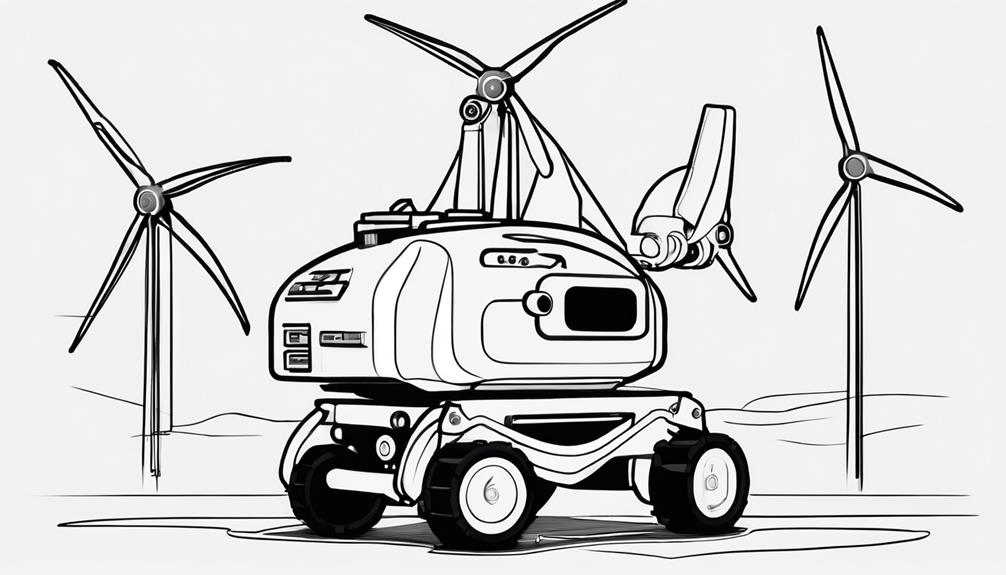
Utilizing Remotely Operated Vehicles (ROVs) has revolutionized the inspection and maintenance processes within the energy industry, offering enhanced capabilities for tasks in challenging underwater environments. ROVs are extensively employed for underwater inspections and maintenance in various energy sectors, including power plants and offshore oil facilities. Here are key points highlighting the significance of ROVs in these applications:
- Advanced Equipment: ROVs come equipped with cameras, sensors, and manipulator arms that enable them to perform intricate tasks with precision in challenging underwater conditions.
- Reduced Human Risks: By utilizing ROVs, the need for human divers in hazardous or hard-to-reach underwater areas during energy infrastructure inspections is significantly reduced, enhancing overall safety.
- Deep-Sea Operations: ROVs can operate at significant depths, providing crucial data for maintaining offshore structures and subsea equipment effectively.
- Enhanced Efficiency: The use of ROVs in energy applications improves the efficiency and cost-effectiveness of inspection and maintenance operations, ultimately benefiting the industry as a whole.
Emergency Response Strategies
In the realm of alternative energy sources, a critical aspect that demands meticulous attention is the formulation and implementation of robust emergency response strategies. These strategies are essential for ensuring the continuity of power supply from alternative sources in the event of system failures or disasters. Key components of effective emergency response strategies include having backup power sources like battery storage or diesel generators, conducting regular maintenance, monitoring, and testing of systems, training personnel on emergency protocols, and collaborating with local authorities and emergency services. By incorporating these measures, alternative energy systems can be better prepared to handle emergencies and minimize disruptions to the power supply. The table below highlights the importance of emergency response strategies in safeguarding alternative energy sources:
| Aspect | Importance | Benefit |
|---|---|---|
| Rapid Deployment | Ensures quick response | Minimizes downtime |
| Backup Power Sources | Maintains energy supply | Sustains operations |
| Collaboration | Enhances coordination | Improves overall safety |
Deep Trekker for Power Plant Inspections
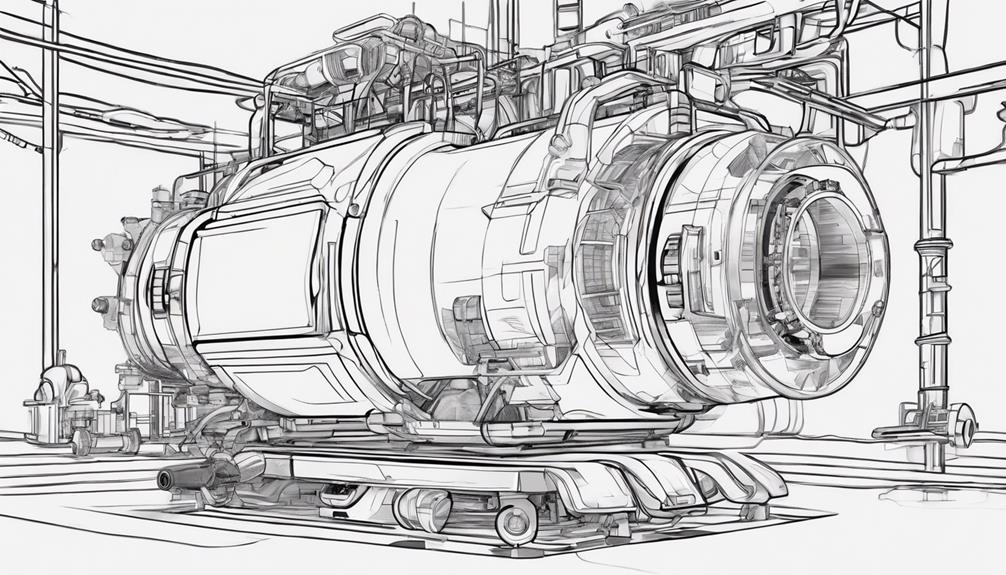
Deep Trekker's innovative underwater drones offer a cost-effective and efficient solution for conducting detailed inspections in power plants, particularly in challenging environments such as confined spaces and cooling water intake structures. These drones can navigate with agility and precision, providing a valuable tool for maintenance and safety assessments in critical areas of power plants. Equipped with high-resolution cameras, LED lights, and sonar technology, Deep Trekker drones enable thorough and accurate inspections without the need for costly and time-consuming manual interventions by divers.
Key Features of Deep Trekker for Power Plant Inspections:
- Cost-Effective Solution: Deep Trekker drones reduce inspection costs by minimizing the need for manual labor.
- Enhanced Safety: By utilizing drones for inspections, power plants can improve safety protocols and reduce risks for personnel.
- Detailed Assessments: The high-tech features of Deep Trekker drones allow for in-depth inspections of complex structures within power plants.
- Maintenance Optimization: Inspections conducted by Deep Trekker drones facilitate proactive maintenance planning, leading to reduced downtime and enhanced operational efficiency.
Global Growth Projections for Renewable Energy
With the increasing global focus on sustainable energy solutions, the growth projections for renewable energy sources present a significant opportunity for transitioning towards a more environmentally friendly and resilient energy landscape. Currently, renewable energy accounts for 26% of the world's electricity supply, with the International Energy Agency (IEA) predicting this share to reach 30% by 2024. The IEA also forecasts a substantial increase in solar capacity, expecting it to grow by 600 GW, and renewable electricity by 1,200 GW by 2024. Solar energy is anticipated to constitute 60% of the predicted renewable growth, highlighting the crucial role that solar power is expected to play in the global renewable energy sector. Through its assessments and policy recommendations, the IEA plays a pivotal role in shaping energy policies for a secure and sustainable future, ensuring that the growth projections for renewable energy are not only met but surpassed in the years to come.
Innovative Energy Sources of the Future
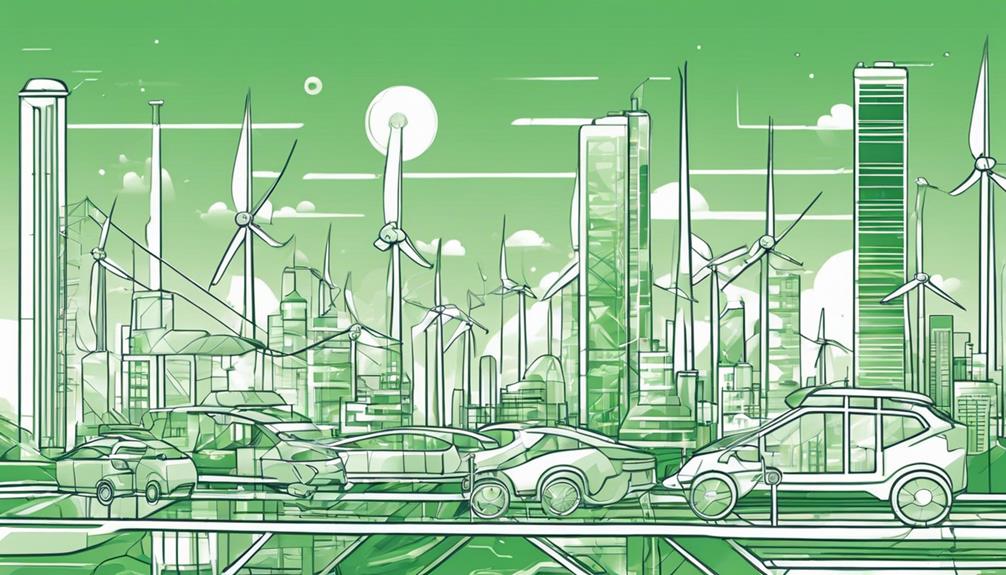
Space-based solar power technology represents a promising frontier in the realm of innovative energy sources, offering the potential to harness sunlight in orbit and transmit it to Earth for sustainable power generation. This technology could revolutionize the way we collect solar energy and address issues related to intermittency and efficiency. In addition to space-based solar power, other innovative energy sources hold great promise for the future:
- Human power generation from movement: Utilizing human movement to generate electricity opens up possibilities for powering devices and systems in various settings, including wearable technology and fitness equipment.
- Tidal power: Leveraging the energy potential from ocean tides can provide a reliable and renewable energy source for coastal regions, contributing to a more sustainable energy mix.
- Hydrogen power: With its clean and abundant nature, hydrogen power offers potential applications in fuel cells, transportation, and energy storage solutions, paving the way for a greener future.
- Magma power: By tapping into geothermal heat from beneath the Earth's crust, magma power presents an opportunity for sustainable energy generation in suitable locations, complementing other renewable energy sources.
Frequently Asked Questions
What Is the Most Promising Energy Source for the Future?
When considering the most promising energy sources for the future, factors like sustainability, reliability, and cost-effectiveness are crucial. Solar power and wind energy are at the forefront due to their abundant availability and decreasing costs. Additionally, geothermal power and hydroelectricity offer consistent energy generation. Biofuels and tidal energy show potential but require further technological advancements. Overall, a diversified energy mix incorporating these sources may pave the way for a sustainable energy future.
What Is the Future Potential of Alternative Energy?
The future potential of alternative energy is promising, driven by advancements in solar power, innovations in wind turbine technology, and expansion in hydroelectric capabilities. These developments are key in transitioning towards a sustainable energy landscape. Solar power advancements are expected to drive growth with decreasing costs, while wind turbine innovations and hydroelectric expansion offer additional avenues for clean energy generation. Embracing these technologies is crucial for a greener and more sustainable future.
What Is the Best and Most Available Alternative Source of Energy in the Nearest Future?
In the near future, solar power emerges as the most promising and readily available alternative energy source. Its increasing installations, projected cost reductions, and anticipated global capacity growth indicate its potential as a key energy solution. Wind turbines and geothermal energy also offer viable alternatives, but solar power's scalability, efficiency, and environmental benefits position it as a leading contender in the transition towards sustainable energy production.
Which Renewable Energy Is the Future?
Solar power, wind energy, and geothermal resources are at the forefront of renewable energy discussions for the future. Solar power, with its exponential growth projections and cost reductions, is positioned as a leading contender. Wind energy's scalability and efficiency, along with geothermal resources' reliability, also make them promising alternatives. As we move towards a more sustainable energy landscape, these renewable sources are key players in shaping the future of energy production.
Conclusion
In conclusion, the most promising alternative energy sources for the future, such as solar, wind, and geothermal energy, are like beacons of hope guiding us towards a more sustainable and cleaner energy landscape. With advancements in technology and growing global awareness of the need for renewable energy, these sources hold immense potential to shape a greener future for generations to come.
